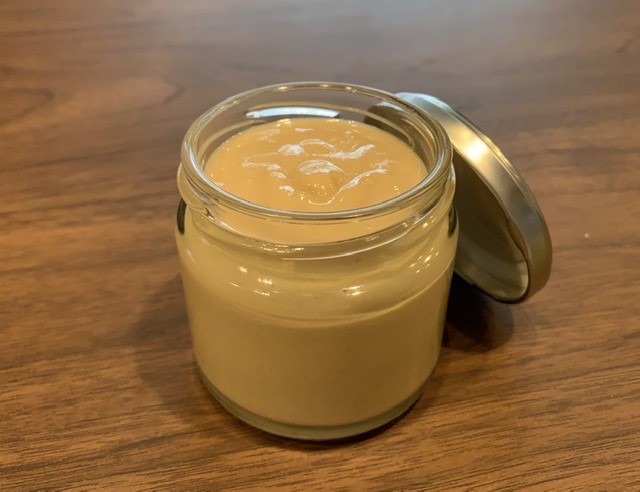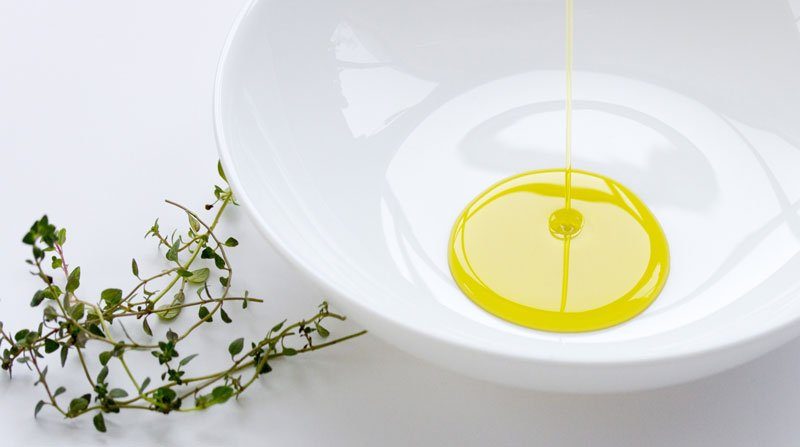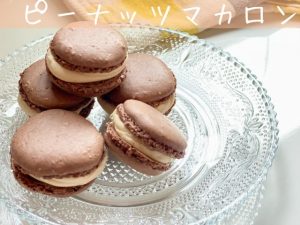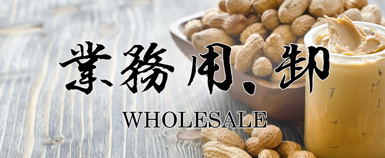Easy at home… make your own peanut butter with your own twist! Learn how to make delicious peanut butter the way only a peanut specialist can, along with four popular peanut cream recipes!
You can learn how to make peanut butter without fail, how to store it, and how to choose the right product, as well as order ingredients and popular peanut butter products.

Make your own peanut butter!
The reason there are so many varieties of peanut butter on the market is because they are made easier to eat or sweetened. You can make your own peanut butter by combining the following six ingredients and adjusting the flavor to your liking!

| Rosted peanuts | Peel off the thin skin and make sure only good kernels are used. |
| Sugar | You can adjust the sweetness to your liking. |
| Salt | A little goes a long way to enhance the natural sweetness. |
| Vegetable oil | Mix in just the right amount to make it thicker and easier to eat. |
| Thin peanut skin | You can consume the whole healthy components of the peanut skin. It gives off an aroma, but it also has a bitter taste. |
| Chopped peanuts | Chopped peanuts give a crunchy texture to the peanut butter. Add them at the very end. |
To make it, just put it in a blender and stir for about 5 minutes!
(You can also use a food processor or mortar and pestle.)

It will start out as a powder and gradually become a paste after about 3 minutes. When the whole mixture is a paste and stirred for another 1-3 minutes to make it tender, the peanut butter is ready.

How to make unsweetened peanut butter.
Peanuts do not need to be mixed with anything to make peanut butter. It keeps well, so it is convenient to make and set aside. And you can always add sugar to taste later!

Ingredients, how to make
- 300 g unbaked peanuts, peeled
Put in a blender and stir for 5 minutes.
How to make sweetened peanut butter.
Peanut butter with sugar to maximize the natural flavor of the peanuts! Minimal adjustment of flavor, no vegetable oil dilution, low sugar content, and a gentle sweetness.

Ingredients and recipe
- 300 g unbaked peanuts, peeled
- 20 g sugar
- 0.5 g salt
Put in a blender and stir for 5 minutes.
How to make Crunch (with grains) Peanut Butter.
Grain-infused crunchy texture! And a little sweet, so even little ones can enjoy eating it! Even hard-to-eat peanut butter can be smoothed out with a little vegetable oil, making it easier to spread on bread.

Ingredients and recipe
- 300 g unroasted peanuts, skinned
- 30 g sugar
- 0.5 g salt
- 20 g vegetable oil
- 60 g chopped peanuts
Put the mixture in a blender, stir for 5 minutes, remove, and add the chopped peanuts at the end.
How to make peanut butter with thin skin.
Thin-skinned effect for more aroma! In addition, the thin skin of peanuts contains a remarkable polyphenol called resveratrol, and health-conscious people recommend eating the whole thin skin. However, the thin peanut skin has a slightly bitter taste, so it is better to add sugar to make it easier to eat.

Ingredients and preparation
- 300 g unroasted peanuts with the skins removed
- 35 g sugar
- 0.5 g salt
- 20 g vegetable oil
- Peanut skins
Place in a blender and stir for 5 minutes. Peel the peanuts properly and carefully select the good kernels to use.

What are some tips for making peanut butter that won’t go wrong?
- Peel the peanuts properly and check the kernels. If even one discolored kernel gets in, the aroma will be bad.
- Peel off any peanuts that stick to the mixer wall and stir repeatedly.
- It is easier to succeed if the amount of peanuts is about one-third of the mixer’s capacity.
- If it does not become a paste easily, warm it in the microwave for 30-60 seconds.
- If it doesn’t turn into a paste easily, add a little vegetable oil and stir with a mixer.
- If you are using a small miller, chopping the peanuts finely will make the paste smoother.

Storing Peanut Butter
Peanut butter is surprisingly quite dry and can be stored at room temperature for up to four months if water is avoided. All of the recipes above can also be stored at room temperature.

Plus, it’ ll keep even longer in the fridge! In the summer, I suggest keeping them refrigerated! The quality of the product will not be affected, although it will harden when cooled. To avoid condensation, leave it at room temperature with the lid closed for a while to thaw naturally before using.

When stored at room temperature in the summer, the oil and peanuts may separate into two layers, but this is not a problem at all, so stir well before use.

What peanuts do you recommend for making peanut butter?

Roasted Peanuts (Chiba Handachi)
Deliciously roasted Chiba Handachi, the most delicious variety of peanuts produced in Chiba Prefecture, Japan. This luxurious peanut butter made with peanuts that are delicious even when eaten as is will surely be the best peanut butter you have ever tasted.

Hanedashi peanuts
Affordable Hanedashi peanuts are peanuts that have been rejected mainly because of their appearance (black shell, cracked, etc.). However, once the shells are peeled off, they can be used without any problems. It may be a little time-consuming, but it is recommended to peel off the thin skin as well and carefully select only good peanuts for use.
Recipes using peanut butter
Peanut butter can be used for more than just spreading on bread! Here are some creative recipes using peanut butter.
Click here for a collection of peanut butter recipes.
How to choose commercial peanut butter.
Peanut butter is sold by many different manufacturers. Here are some things to help you make a decision when choosing peanut butter.
Unsweetened or sugared ?
- Unsweetened peanut butter is recommended for use as an ingredient in sweets, seasonings, and other cooking. If you want sweetness, you can change to a sugared type by adding sweetness.
- Sugared peanut butter is recommended for spreading on bread. If you want less sweetness, you can also use it for cooking.

Thick and sticky type or light and creamy type?
- The sticky type is peanut butter with only peanuts or with a little vegetable oil added. It is very rich because it contains a lot of peanuts.
- The cream type is a light peanut butter with more milk, syrup, shortening, etc. added. Recommended for those who want to eat casually.

Not only peanut butter with grains! There are many variations of peanut butter with XX.
Peanut butter can be found in a wide variety of products. In addition to the orthodox peanut butter with grains, there are also peanut butter with thin skin, chocolate, honey, milk, soybean flour, sesame, etc. If you find a flavor you like, why not give it a try? If you find a flavor that interests you, why not give it a try?

What can you tell by looking at the food label in Japan.
What’s in a lot of it?
Ingredients must be listed in descending order of content according to the law. Peanut butter, which contains the most peanuts among the ingredients, has peanuts (or peanuts) listed first.
Where do peanuts come from?
Peanuts are produced in many countries outside of Japan, including the United States, China, India, and Africa, each with its own characteristics. Japanese peanuts have a mellow, gentle sweetness that makes them the best ingredient for thick peanut butter, which has fewer ingredients.
Are food additives used?
If there is a / (slash) in the ingredients column, it is a food additive after that. If you are concerned about it, you may want to check.
- Preservatives preserve the quality of peanut butter. Even peanut butter made with foods that have water in them, such as candy or milk, will be able to be stored for a long time!
- Antioxidants preserve the taste of the oil in peanut butter. Vitamin C and other ingredients are also treated as additives when added for antioxidant purposes.
- Flavoring agents can increase the flavor of peanuts. They can also reduce the peanut content and make it more affordable.
- Emulsifiers stabilize peanut butter and prevent separation of oil and peanuts.
- Colorants adjust the color.
Popular and recommended peanut butter products!
Japanese Peanut Paste
A thick, sticky type of peanut butter. It is not diluted with oil, so it is very thick and has a smooth texture due to the fine grinding. You can directly enjoy the taste of Japanese Chiba peanuts. (Unsweetened and sweetened)
Creamy Peanut Butter
Creamy peanut butter. It has a light and fluffy texture that feels like air in your mouth. Spread it on bread and enjoy. (Sugar-sweetened)
Related Peanut Butter Articles
Peanut Butter Nutrition

How to Roast Raw Peanuts


















